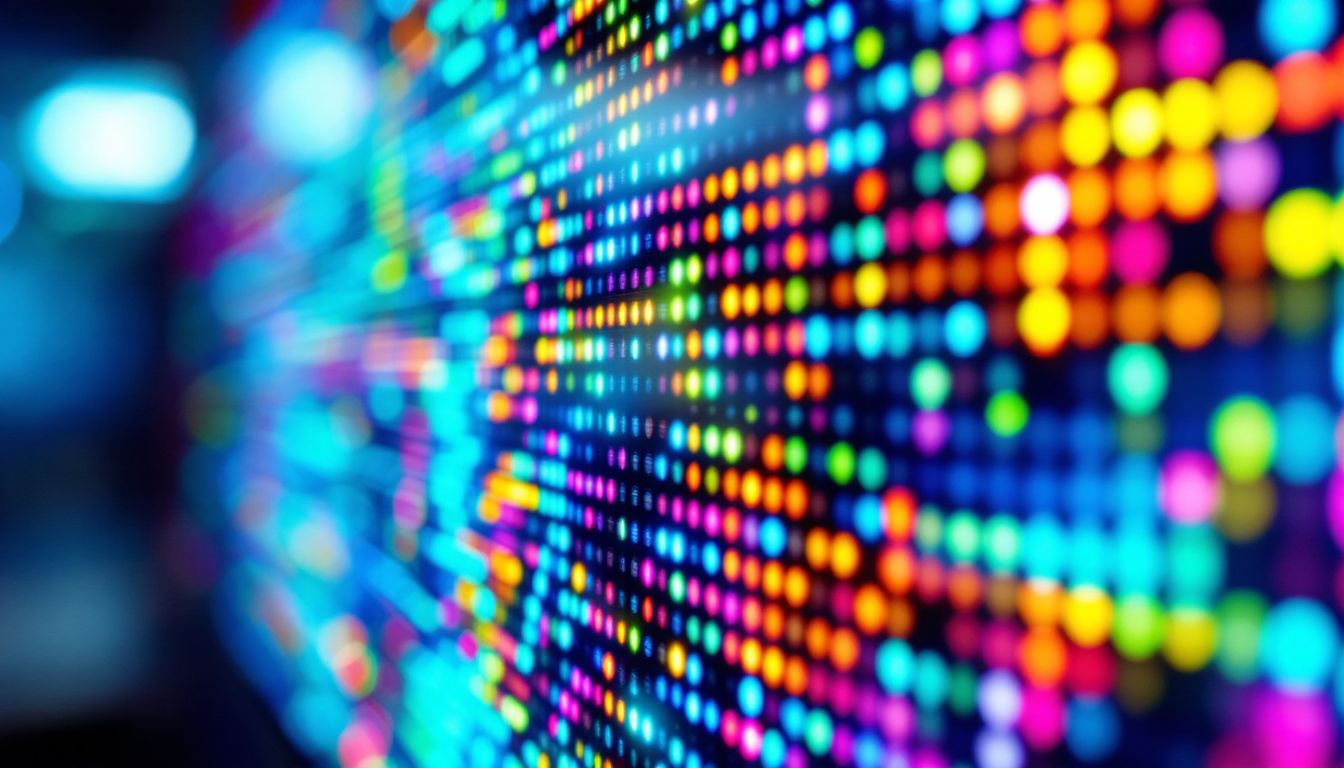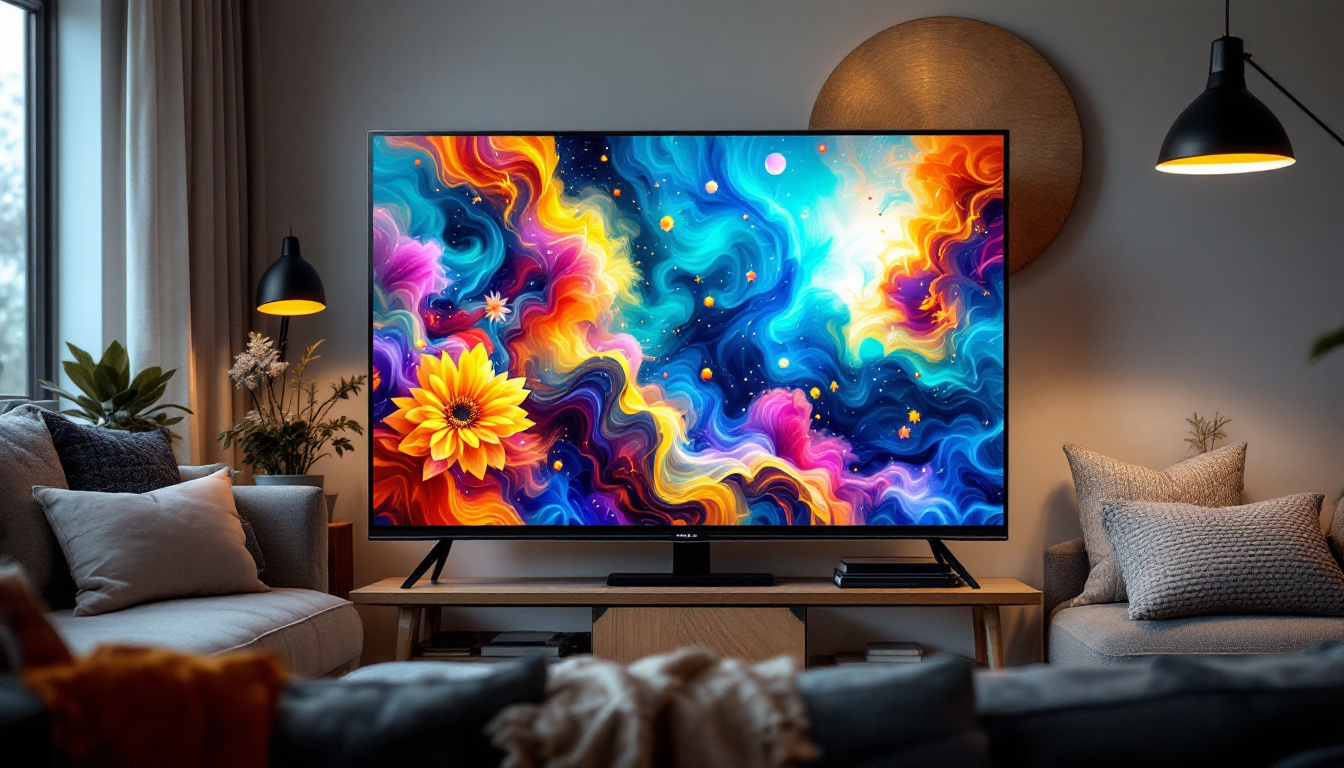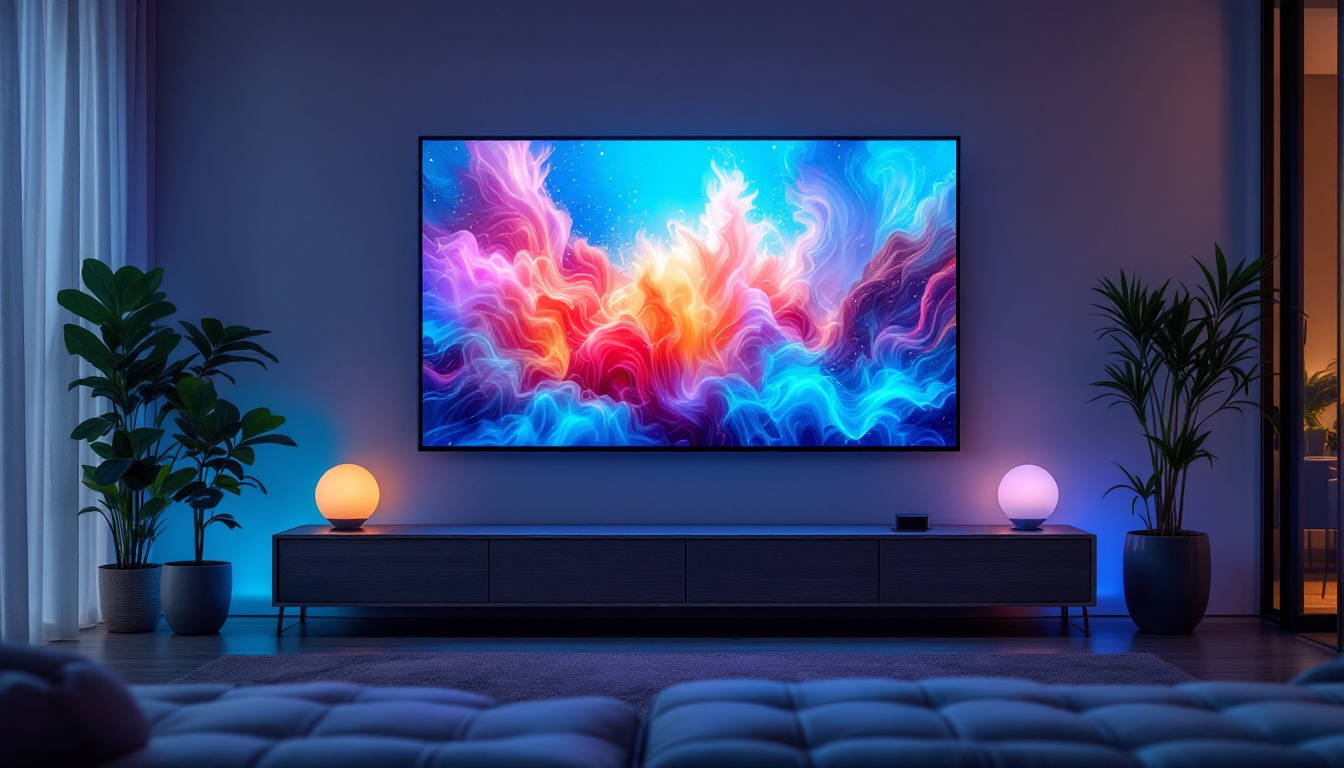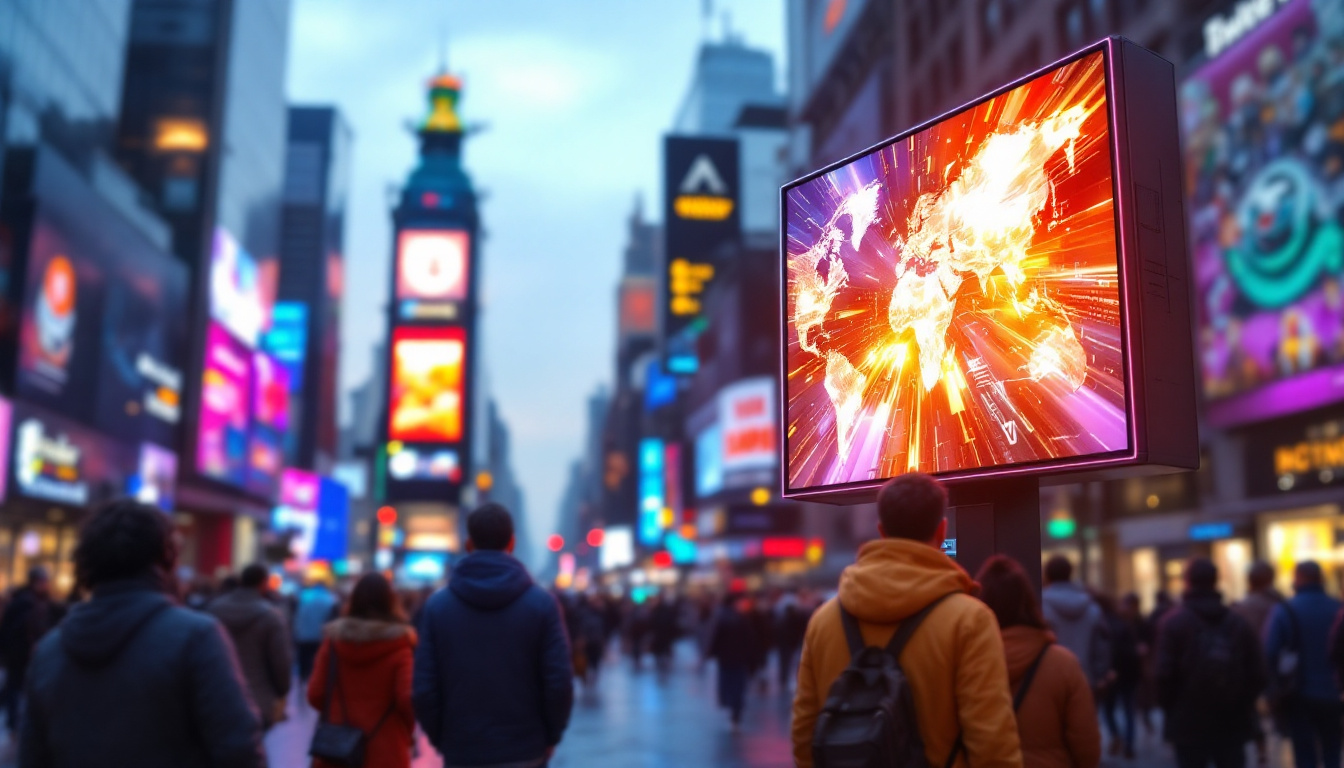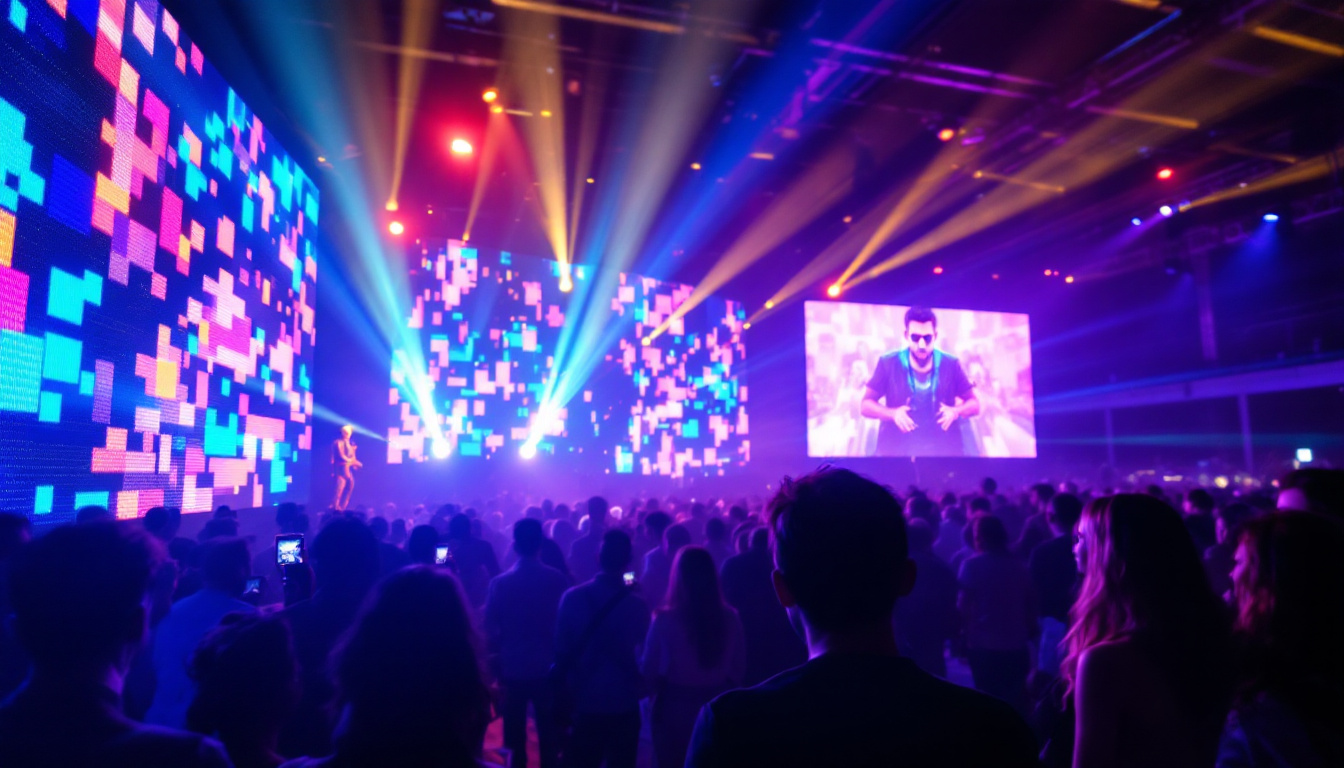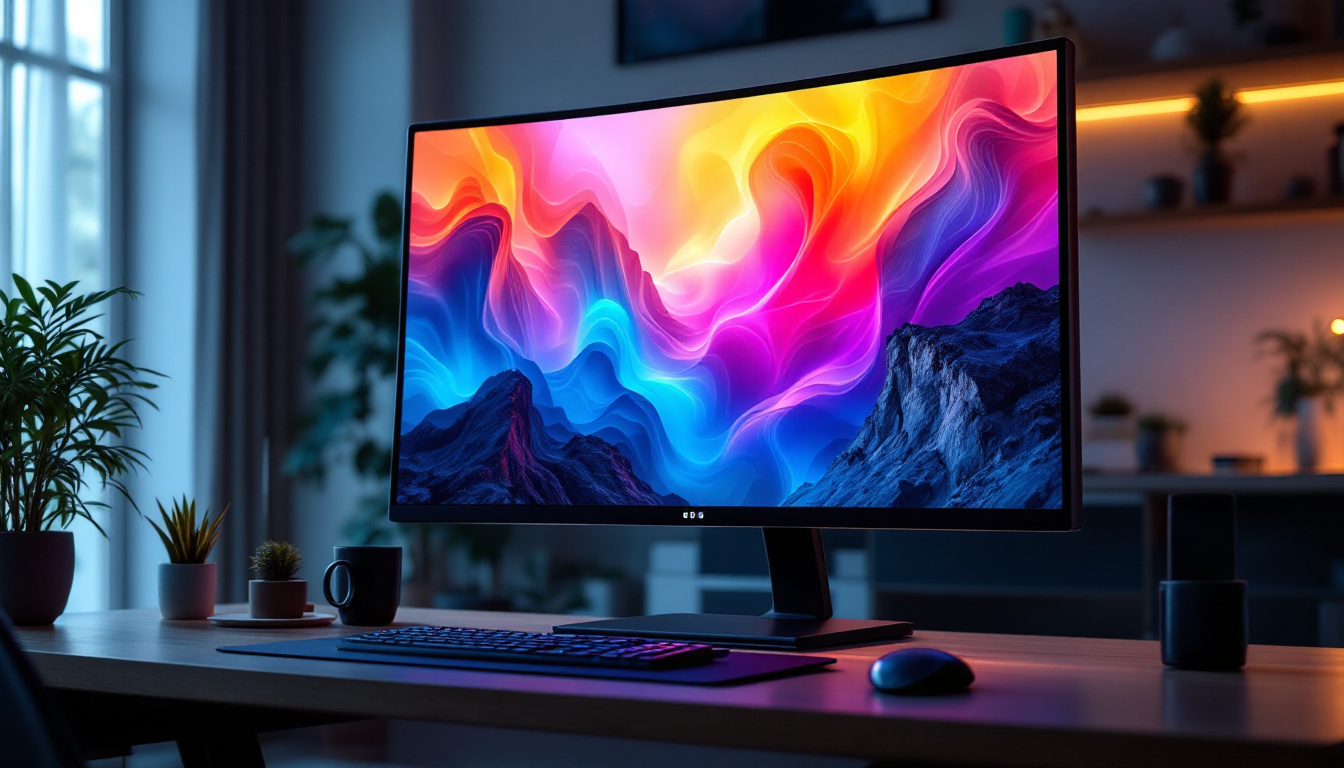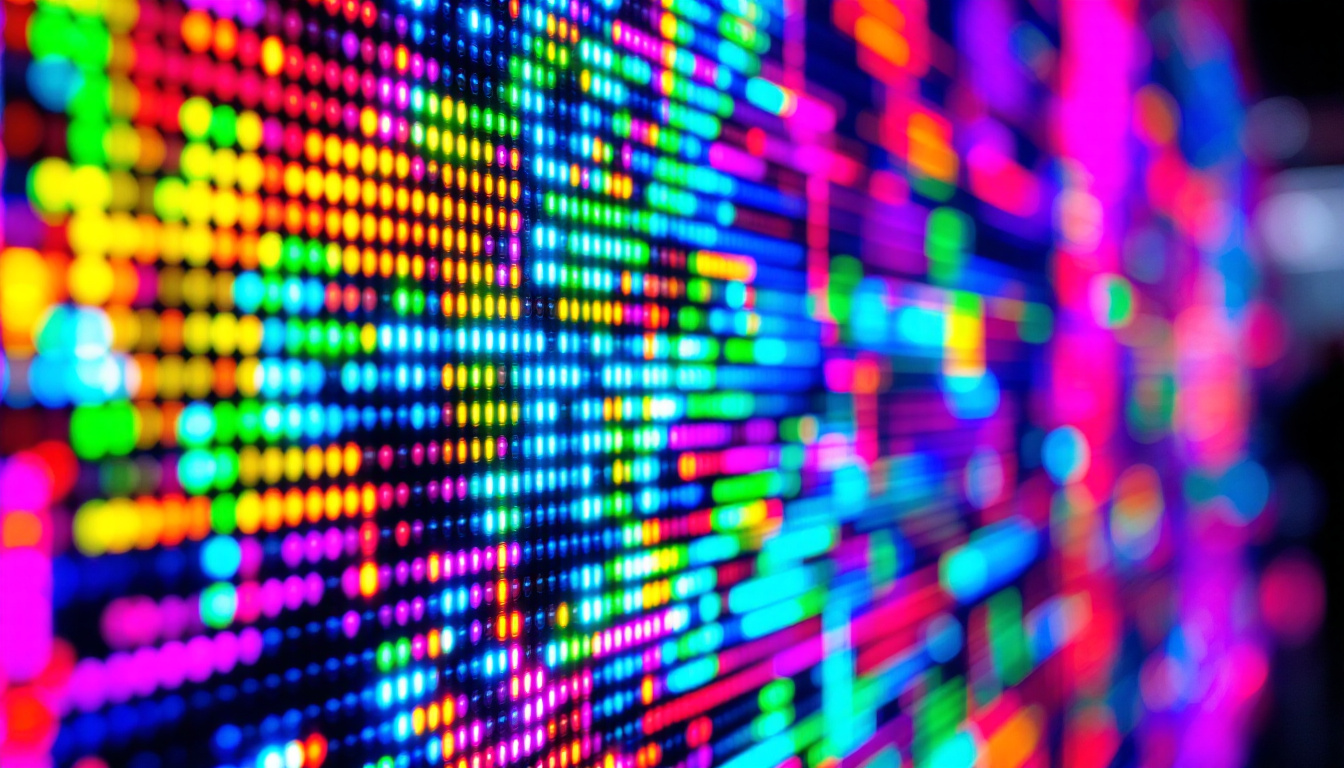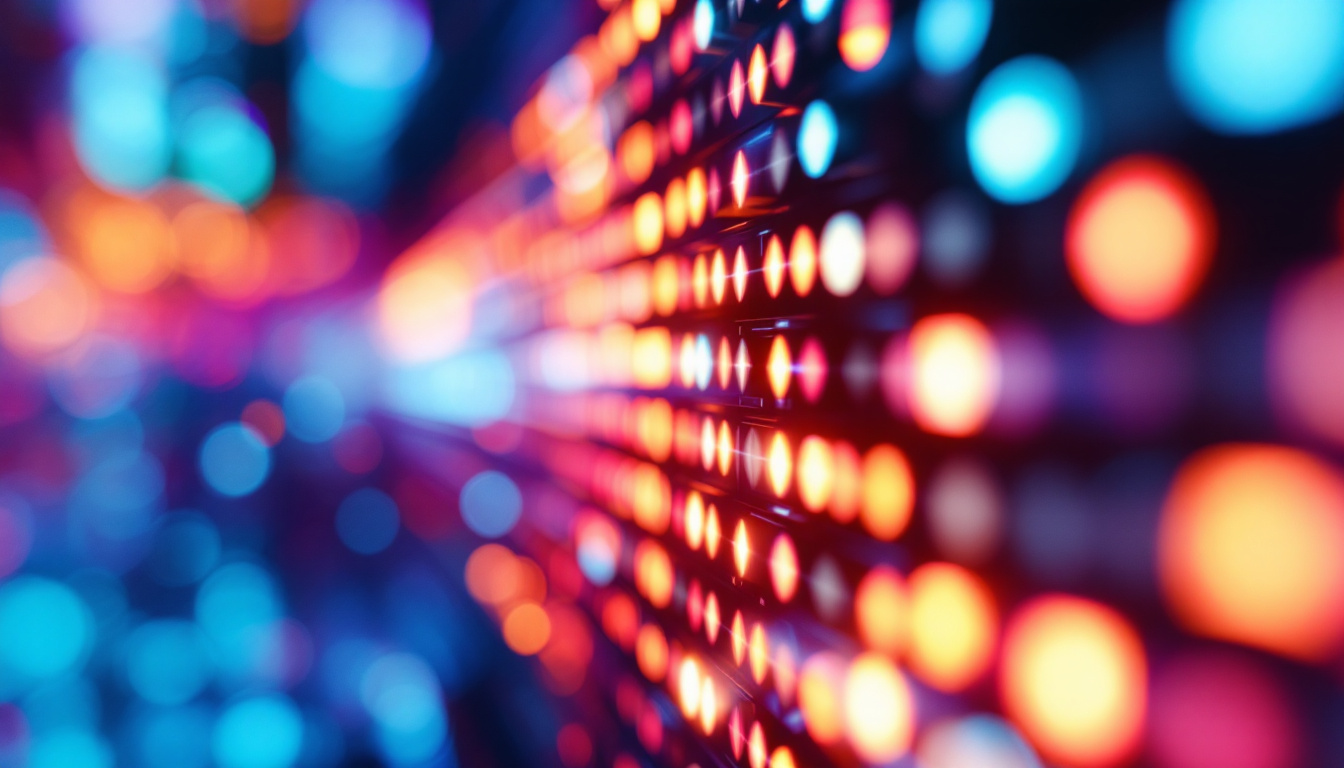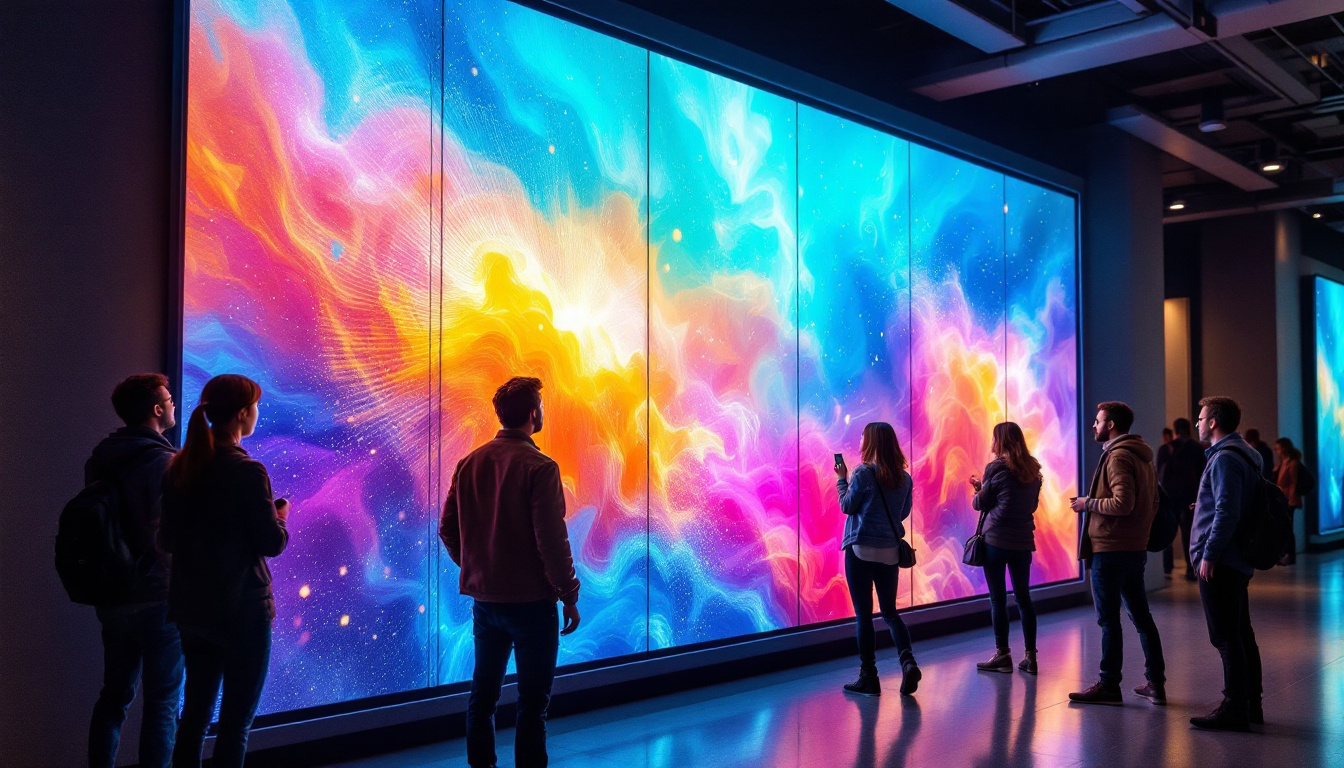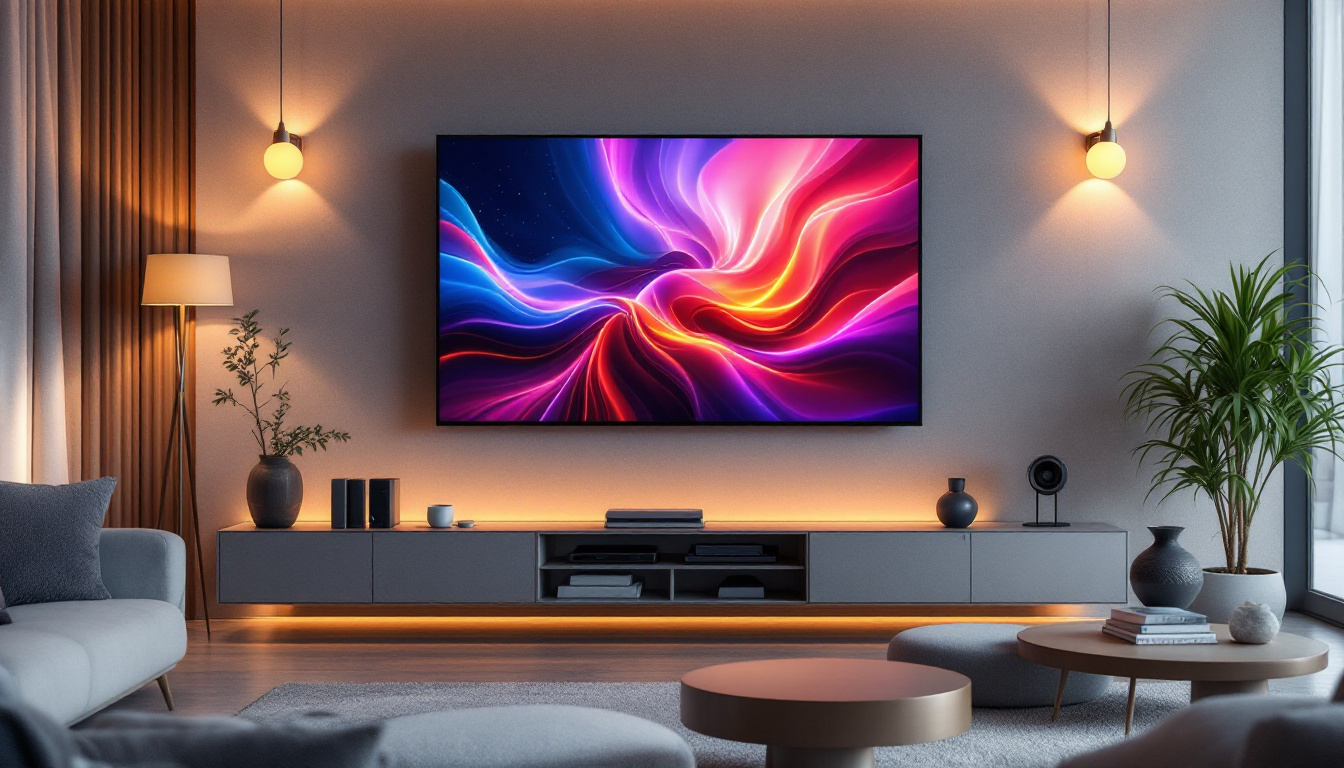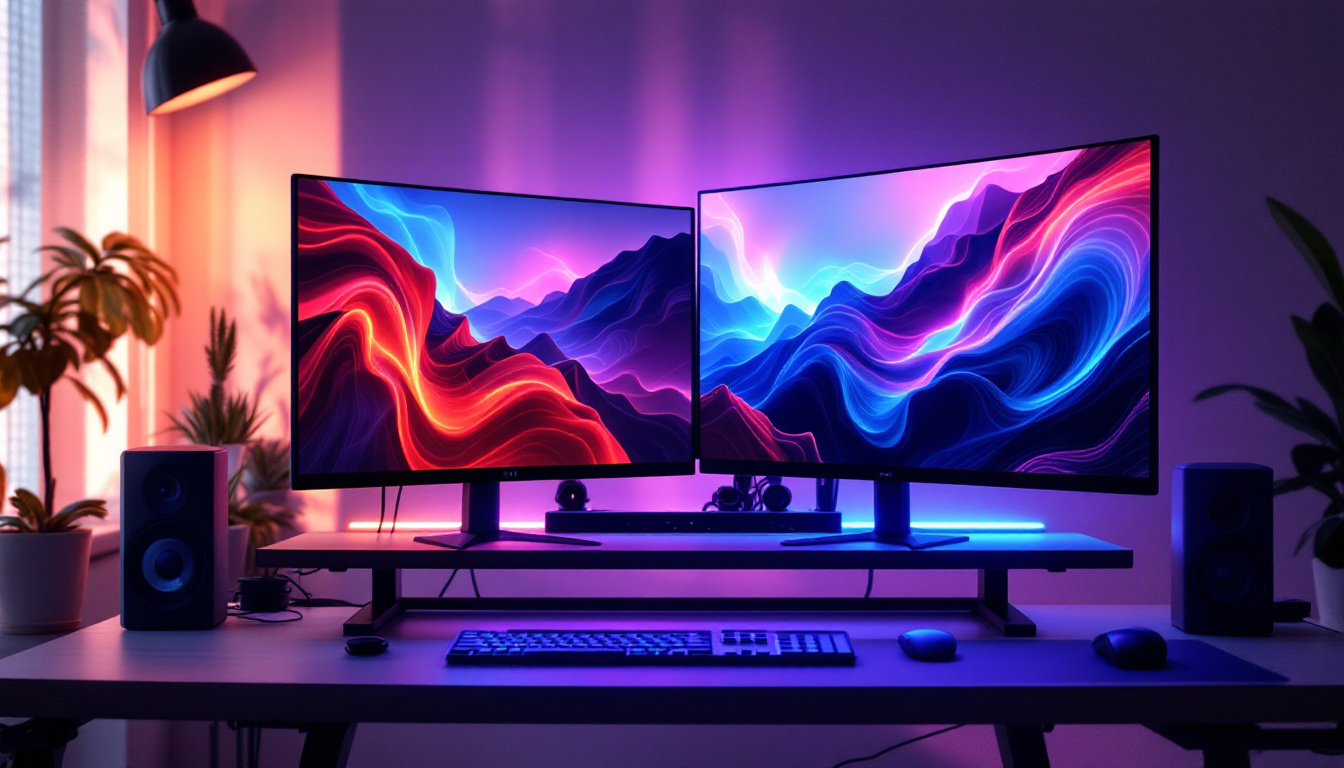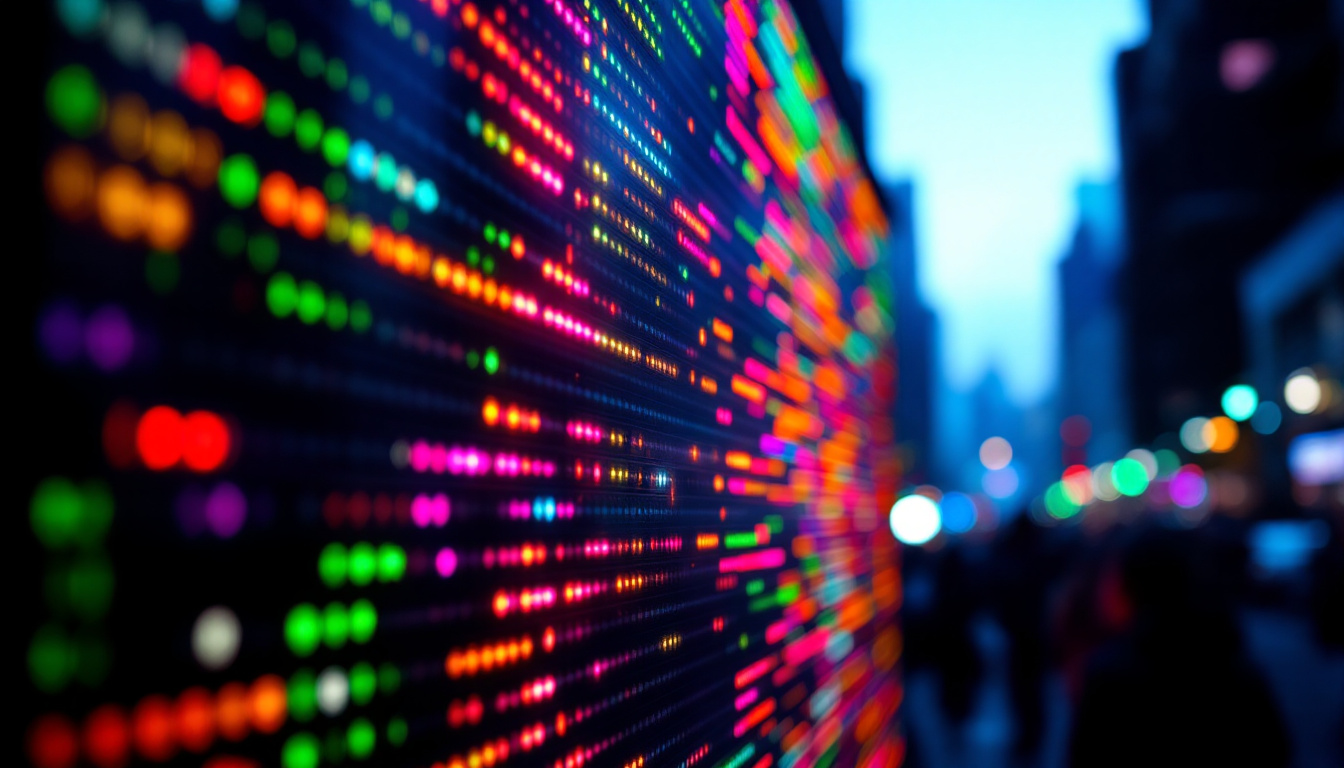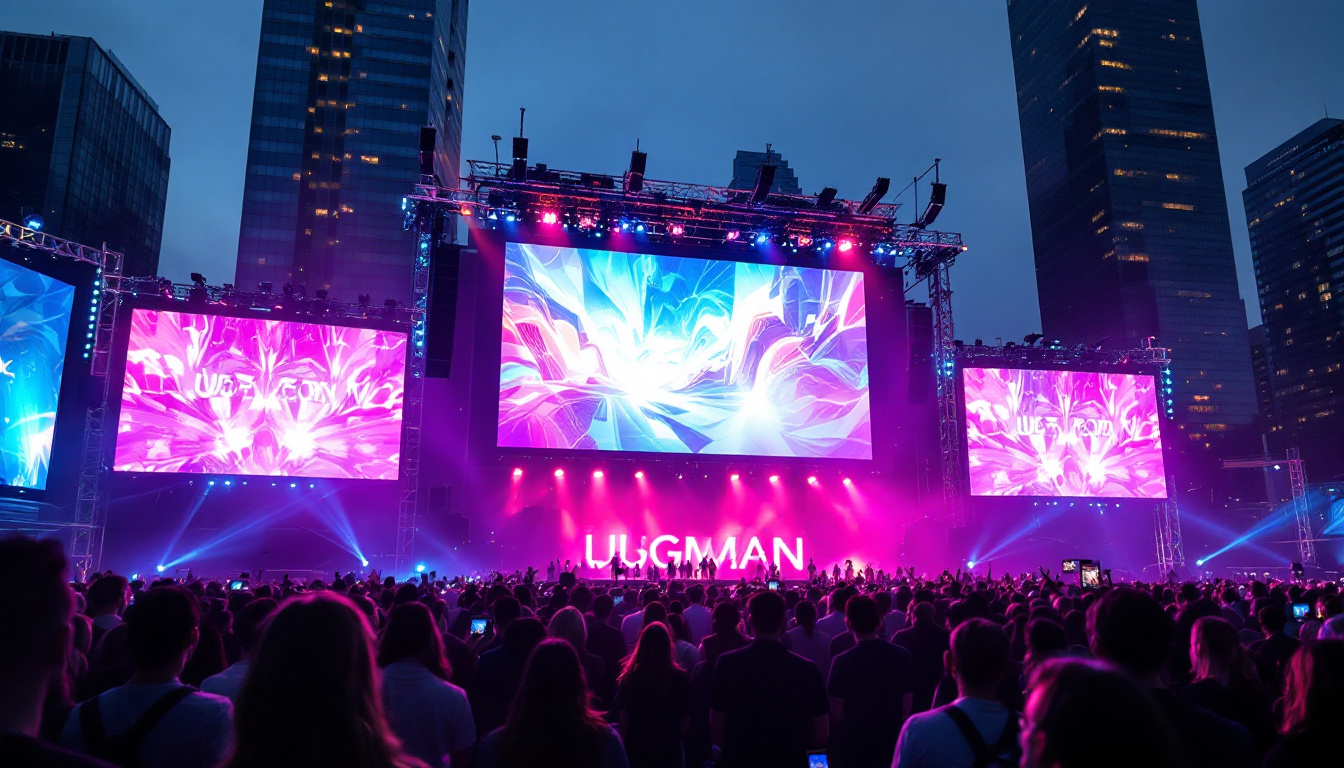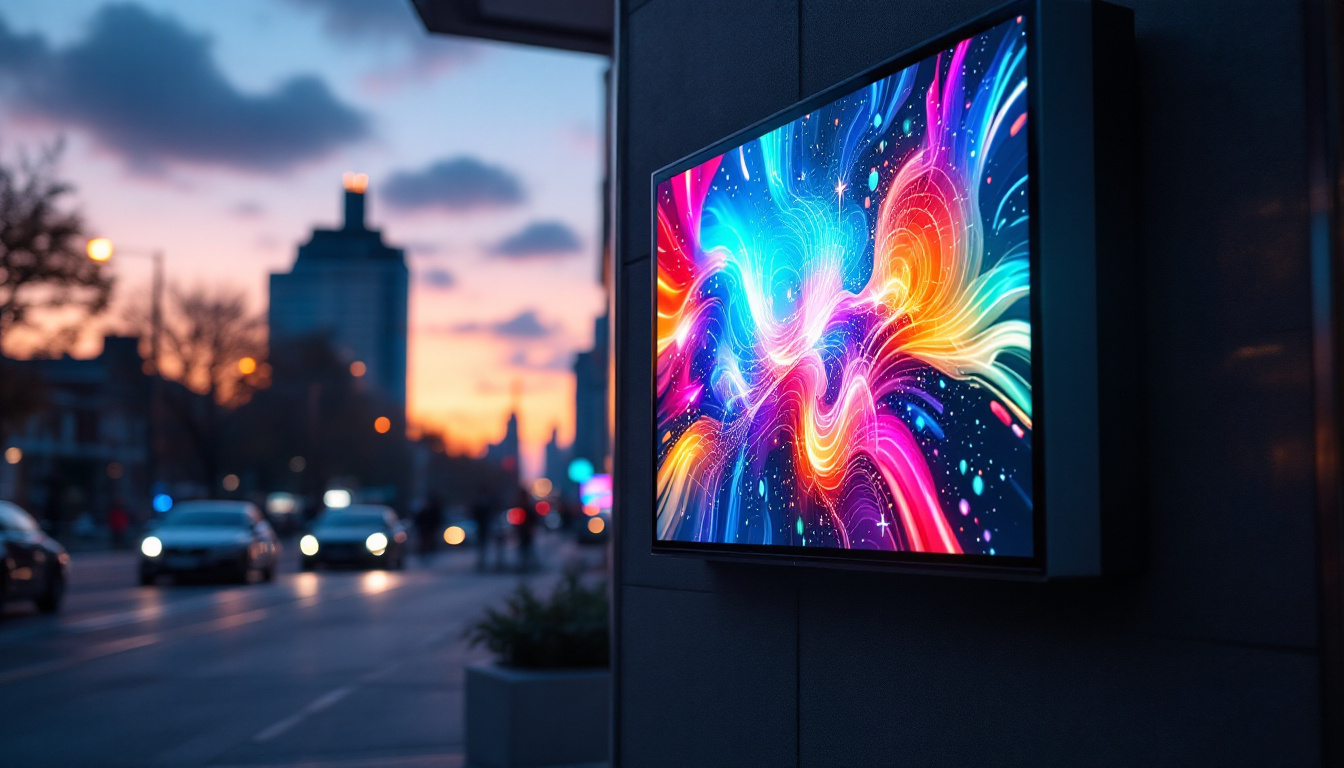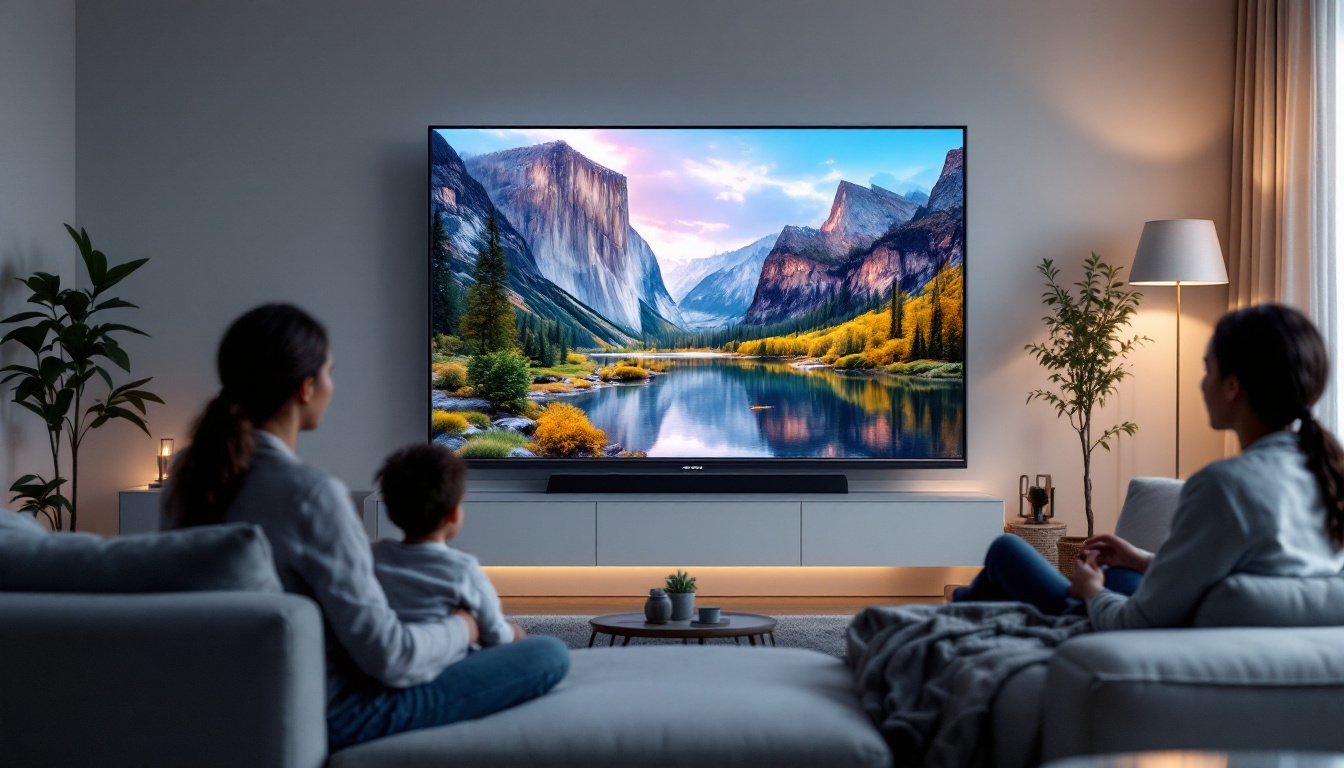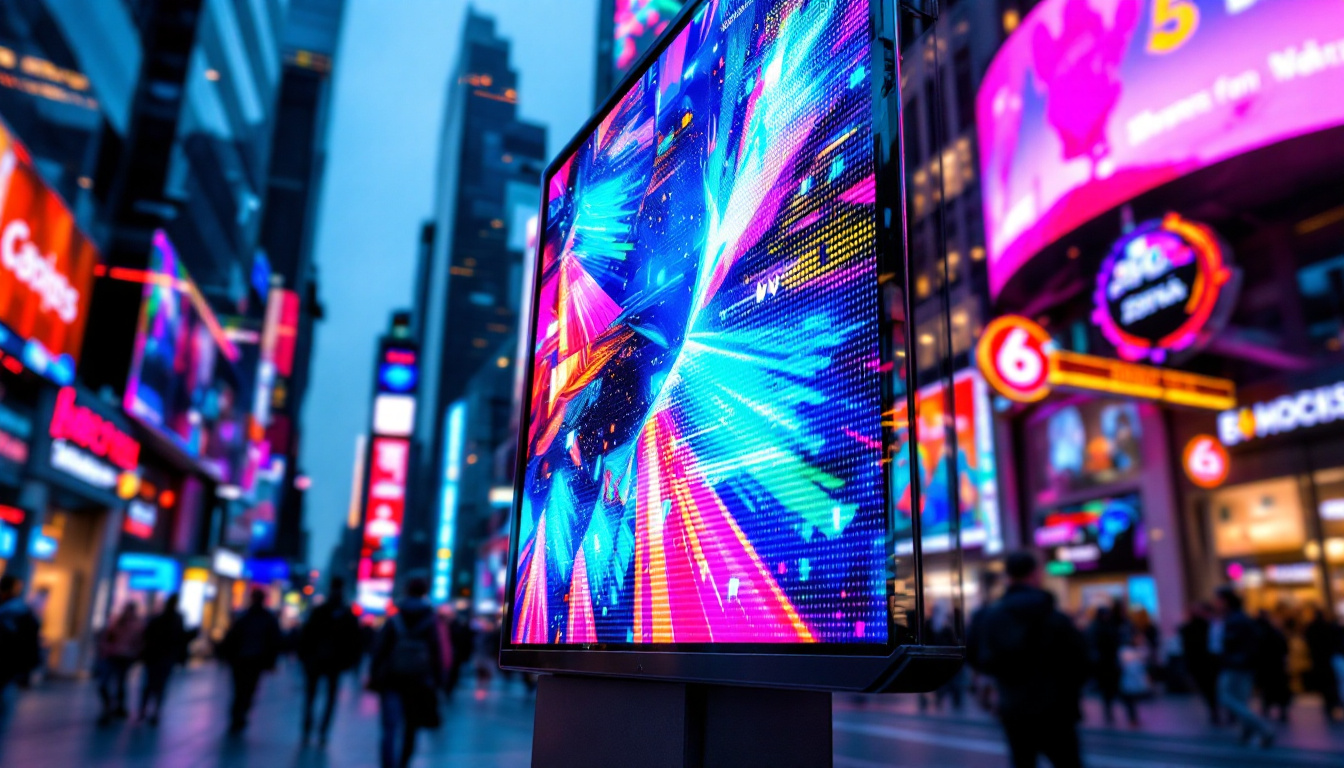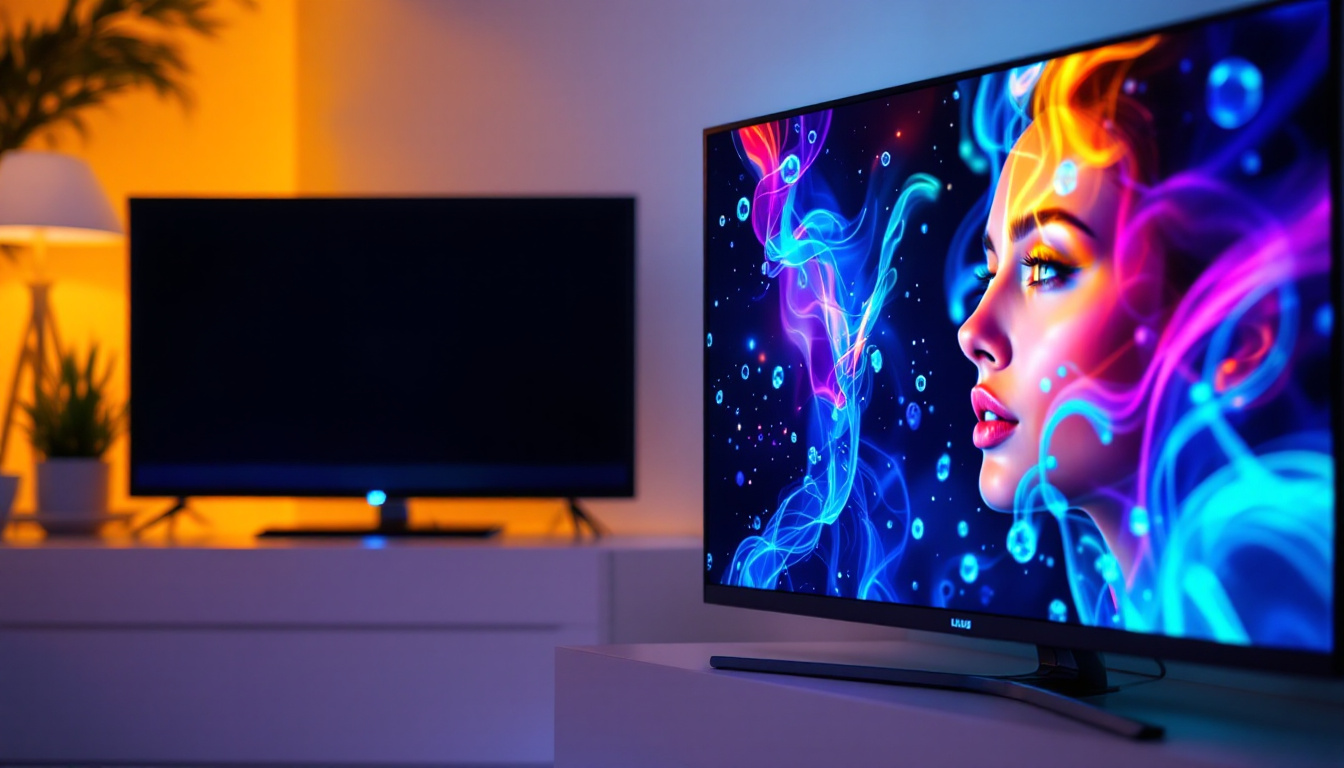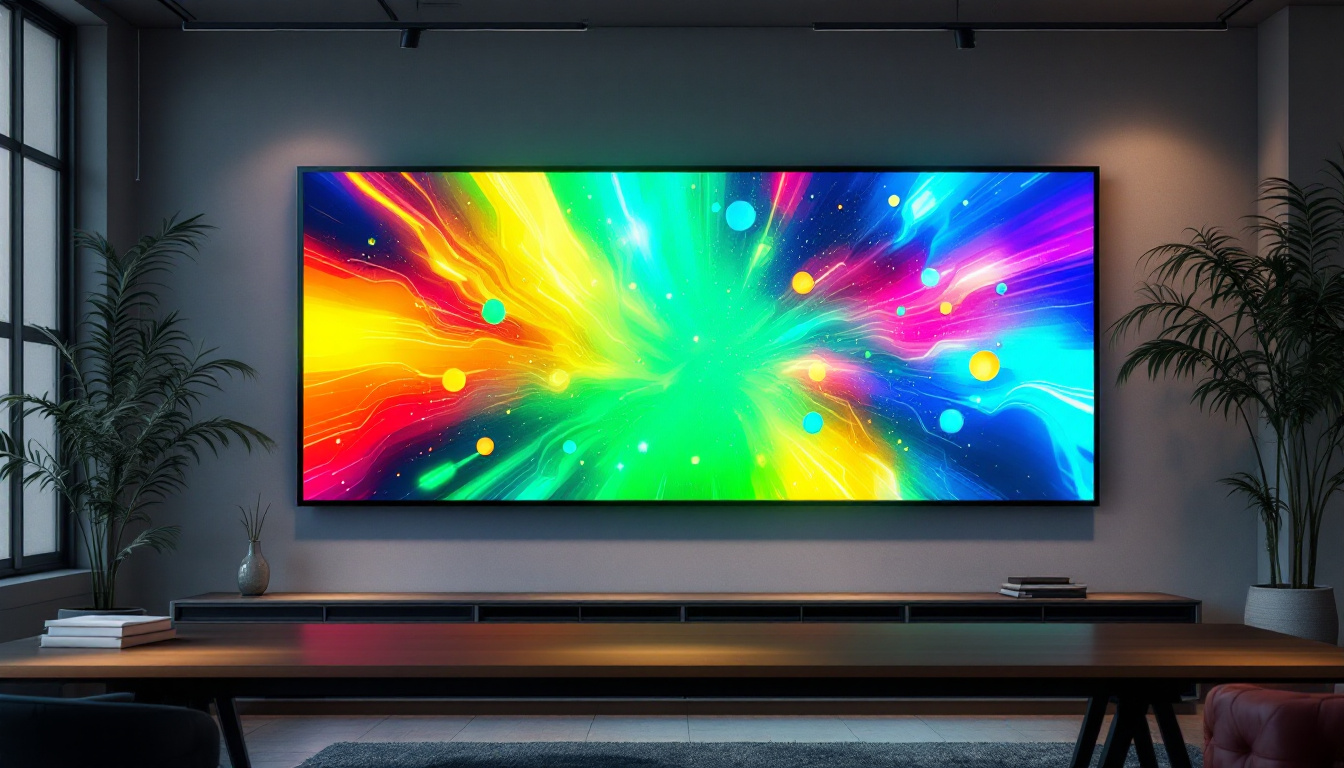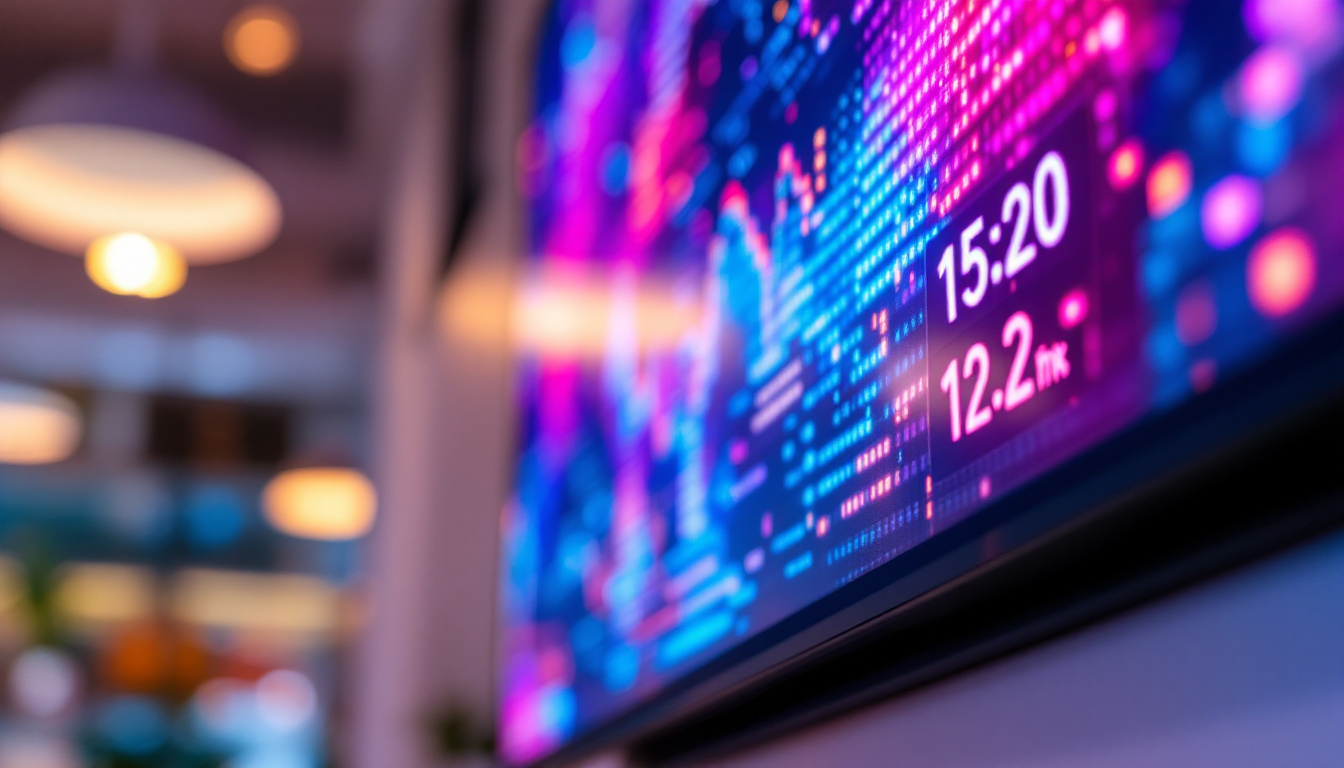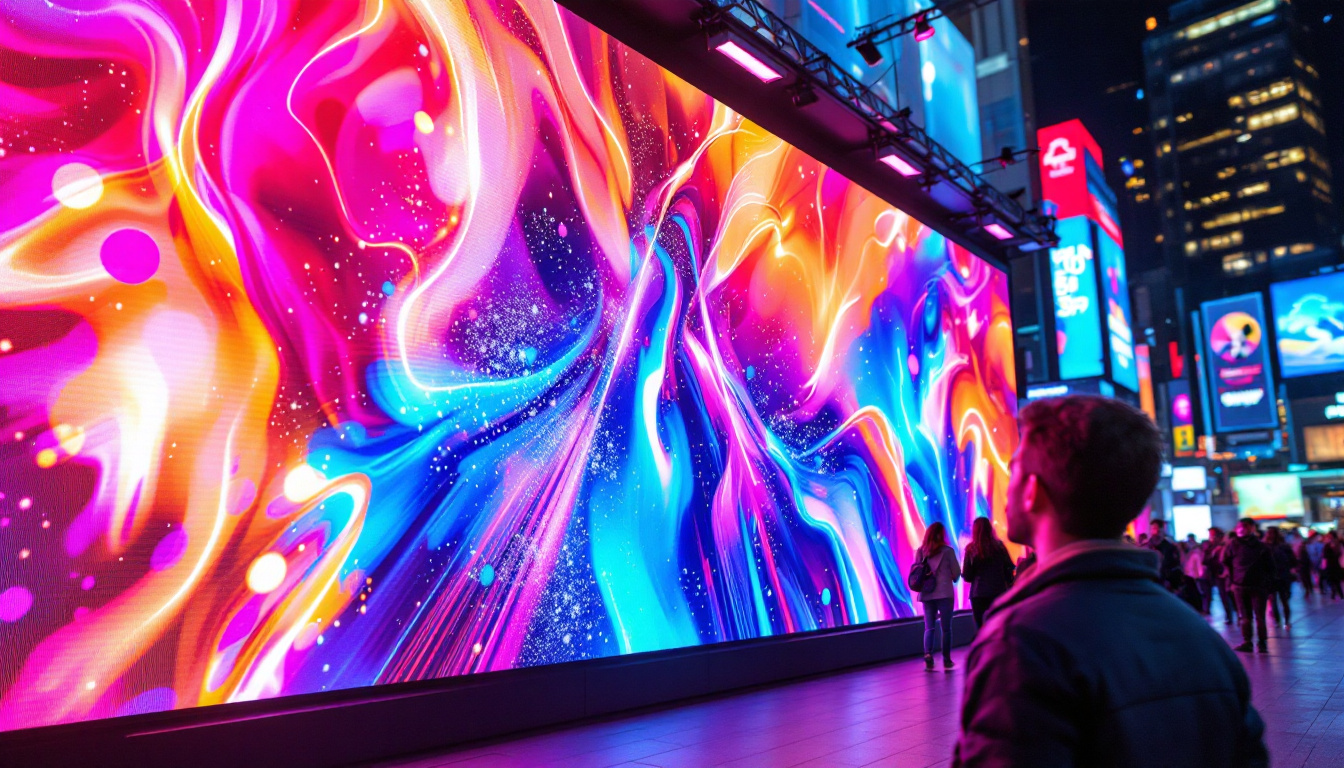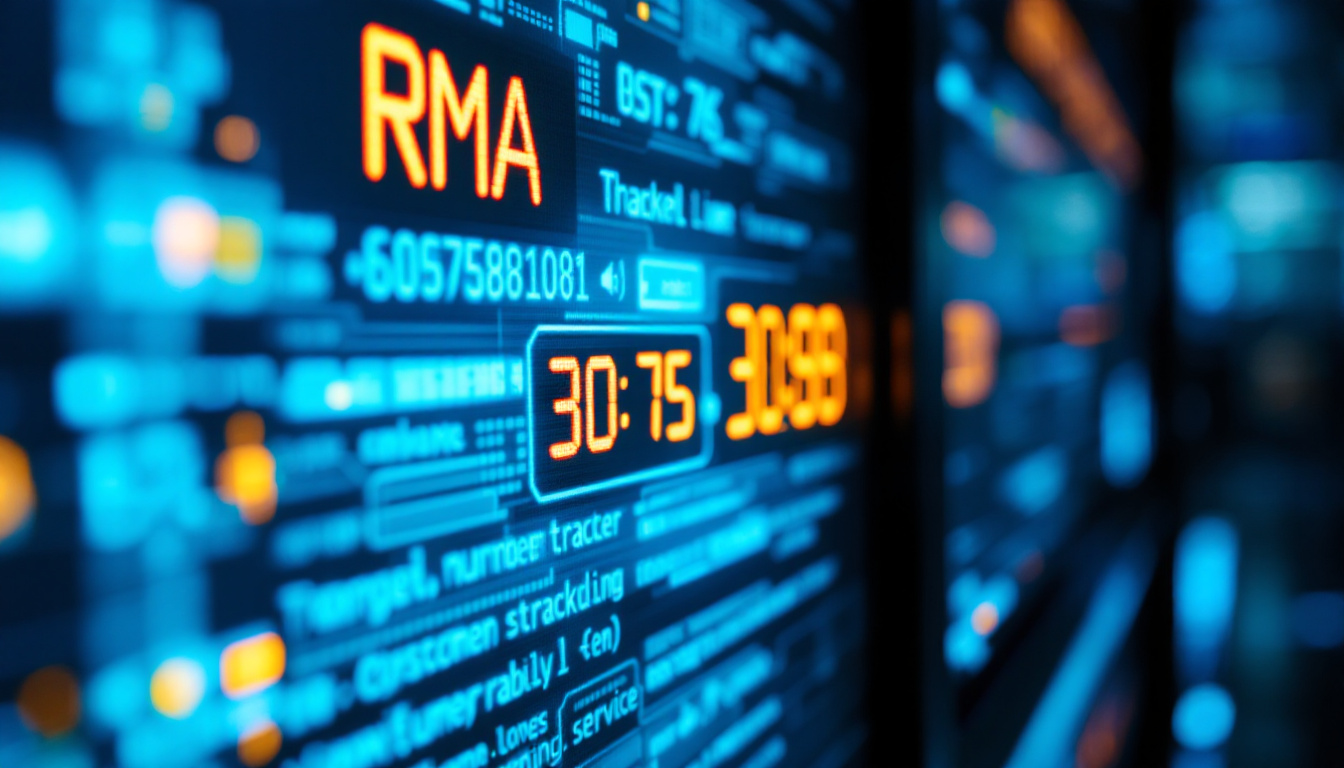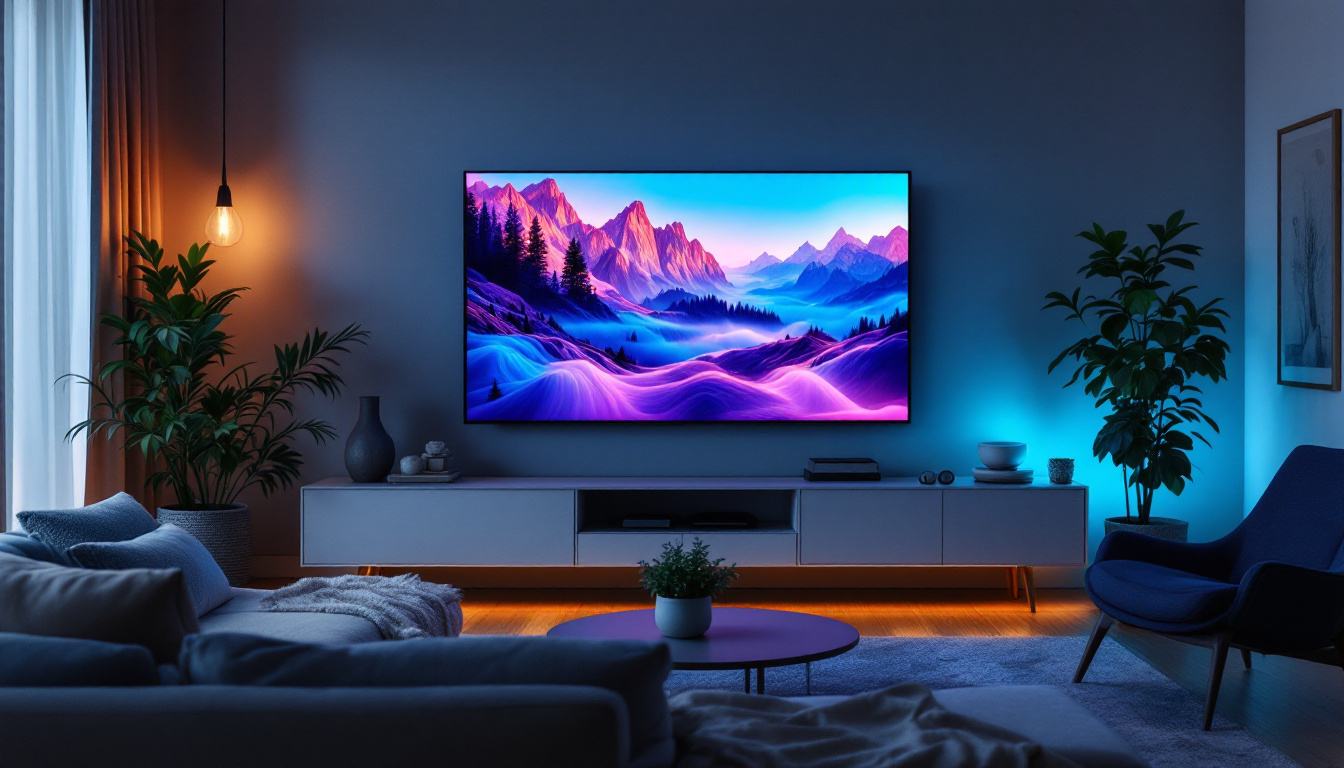In today’s fast-paced digital world, the demand for high-quality visual displays has surged dramatically. Commercial display monitors, particularly those utilizing LED technology, have become essential tools for businesses across various sectors. From retail environments to corporate offices, LED displays offer a versatile solution for conveying information, advertising products, and enhancing customer engagement. This article delves into the intricacies of LED displays, exploring their technology, applications, and advantages.
Understanding LED Technology
Light Emitting Diodes (LEDs) are semiconductor devices that emit light when an electric current passes through them. This technology has revolutionized the way displays are designed and utilized, offering numerous benefits over traditional display methods. The compact size, energy efficiency, and longevity of LEDs have made them a preferred choice in various applications, from consumer electronics to large-scale advertising displays.
The Basics of LED Displays
LED displays consist of an array of individual LED lights that work together to create images and videos. These displays can be categorized into different types based on their configuration and application. The most common types include:
- Direct View LED: These displays use individual LEDs to form the entire screen, providing high brightness and contrast.
- LED-backlit LCD: This type uses LEDs to backlight an LCD panel, offering improved color accuracy and energy efficiency.
- Organic LED (OLED): OLED displays use organic compounds to emit light, resulting in vibrant colors and deeper blacks.
Each type of LED display has its unique advantages, making them suitable for different applications. Understanding these distinctions is crucial for businesses looking to invest in commercial display monitors. For instance, Direct View LEDs are often used in outdoor advertising due to their superior brightness, while OLEDs are favored in high-end televisions for their stunning visual quality. As technology continues to evolve, new types of LED displays are emerging, including MicroLEDs, which promise even greater efficiency and flexibility in design.
How LED Displays Work
At the core of LED technology is the principle of electroluminescence. When an electric current passes through a semiconductor material, it excites the atoms, causing them to emit light. The color of the emitted light depends on the materials used in the semiconductor. By combining red, green, and blue (RGB) LEDs in varying intensities, a full spectrum of colors can be produced.
The arrangement of these LEDs on a screen is crucial for the display’s resolution and clarity. Higher pixel densities result in sharper images, making it essential to choose the right configuration based on the intended use of the display. Additionally, advancements in technology have led to the development of adaptive brightness controls, which adjust the display’s brightness based on ambient light conditions. This not only enhances the viewing experience but also contributes to energy savings, making LED displays an eco-friendly choice. Furthermore, the longevity of LEDs—often exceeding 50,000 hours—means that they require less frequent replacements, reducing waste and maintenance costs over time.
Applications of Commercial LED Displays
LED displays are employed in a wide array of commercial settings, each leveraging the technology’s strengths to enhance communication and engagement. Here are some of the most common applications:
Retail Environments
In retail spaces, LED displays serve as powerful marketing tools. They can showcase promotional content, highlight new products, and create an immersive shopping experience. The vibrant colors and high brightness of LED displays attract customer attention, encouraging impulse purchases.
Additionally, digital signage powered by LED technology can be easily updated in real-time, allowing retailers to adjust their messaging based on inventory levels or seasonal promotions. This flexibility is invaluable in today’s dynamic retail landscape.
Corporate Settings
In corporate environments, LED displays are utilized for various purposes, including presentations, video conferencing, and information sharing. Large-format LED screens can enhance meeting room experiences, providing clear visuals that facilitate better communication among team members.
Moreover, LED displays can serve as digital bulletin boards, displaying company announcements, performance metrics, and other important information. This helps foster a more informed workplace culture, where employees are kept up-to-date with company news.
Public Spaces and Events
LED displays are also prevalent in public spaces, such as airports, stadiums, and concert venues. They can convey vital information, such as flight schedules or event details, while also providing entertainment through dynamic visual content.
During live events, LED screens can enhance the audience’s experience by displaying close-ups of performances or interactive content. This not only engages attendees but also creates a more memorable experience, encouraging repeat attendance.
Advantages of LED Displays
The rise in popularity of LED displays can be attributed to their numerous advantages over traditional display technologies. Understanding these benefits is crucial for businesses considering an investment in commercial display monitors.
Energy Efficiency
One of the most significant advantages of LED displays is their energy efficiency. Compared to traditional LCD or plasma displays, LED technology consumes significantly less power, leading to lower operational costs. This is particularly beneficial for businesses that operate displays for extended periods.
Additionally, the reduced energy consumption contributes to a smaller carbon footprint, aligning with the growing emphasis on sustainability in the business world. Companies can enhance their green credentials by opting for energy-efficient LED displays.
Longevity and Durability
LED displays are known for their longevity and durability. With a lifespan often exceeding 50,000 hours, these displays can operate for years without significant degradation in performance. This reliability reduces the need for frequent replacements, making them a cost-effective solution in the long run.
Furthermore, LED displays are typically more resistant to shocks and vibrations compared to traditional displays, making them suitable for high-traffic environments. This durability ensures that businesses can maintain a consistent visual presence without the worry of frequent repairs or replacements.
High-Quality Visuals
LED displays are renowned for their exceptional visual quality. They offer high brightness levels, vibrant colors, and excellent contrast ratios, making them suitable for various lighting conditions. Whether in a brightly lit retail store or a dimly lit conference room, LED displays can deliver clear and captivating visuals.
Moreover, advancements in LED technology have led to improved color accuracy and wider viewing angles, ensuring that the content is easily viewable from different positions. This quality is essential for engaging audiences and conveying messages effectively.
Choosing the Right LED Display
With the myriad of options available, selecting the right LED display for a specific application can be challenging. Several factors should be considered to ensure that the chosen display meets the needs of the business.
Screen Size and Resolution
The size and resolution of the LED display are critical factors that influence its effectiveness. Larger displays are ideal for high-traffic areas where visibility from a distance is essential. Conversely, smaller displays may suffice for intimate settings, such as conference rooms.
Resolution is equally important; higher pixel densities result in sharper images and clearer text. Businesses should assess their content and viewing distance to determine the appropriate resolution for their needs.
Indoor vs. Outdoor Displays
Another crucial consideration is whether the display will be used indoors or outdoors. Outdoor LED displays require additional features, such as weather resistance and higher brightness levels, to ensure visibility in direct sunlight and varying weather conditions.
Indoor displays, while not needing to withstand the elements, can focus more on color accuracy and lower brightness levels, as they are typically viewed in controlled lighting environments.
Budget and Total Cost of Ownership
Budget constraints are a reality for many businesses. While LED displays can have a higher upfront cost compared to traditional displays, it is essential to consider the total cost of ownership. This includes energy consumption, maintenance, and potential replacement costs over time.
Investing in a high-quality LED display may yield significant savings in the long run, making it a worthwhile consideration for businesses looking to enhance their visual communication.
Future Trends in LED Display Technology
The LED display industry is continuously evolving, with new technologies and trends emerging regularly. Staying informed about these developments can help businesses make strategic decisions regarding their display investments.
Advancements in Resolution
As technology progresses, the demand for higher resolutions continues to grow. Innovations such as MicroLED and MiniLED are paving the way for displays with even greater pixel densities, allowing for stunning visuals that were previously unattainable.
These advancements will enable businesses to create more immersive experiences, whether through intricate advertising displays or detailed presentations. The future of LED technology promises to deliver even more captivating visual solutions.
Integration with Smart Technology
Another trend is the integration of LED displays with smart technology. As the Internet of Things (IoT) continues to expand, LED displays can be connected to networks for real-time content updates and analytics. This capability allows businesses to tailor their messaging based on audience engagement and preferences.
Smart displays can also incorporate features such as touch interactivity, enabling customers to engage directly with the content. This interactivity enhances the user experience, making displays not just a medium for information but a platform for engagement.
Sustainability Initiatives
As sustainability becomes a focal point for businesses, LED display manufacturers are increasingly prioritizing eco-friendly practices. This includes using recyclable materials, reducing energy consumption, and implementing sustainable production processes.
Companies that adopt sustainable LED displays can enhance their brand image while contributing to a greener future. This alignment with environmental values resonates with consumers, who are increasingly seeking out businesses that prioritize sustainability.
Conclusion
Commercial display monitors utilizing LED technology have transformed the way businesses communicate and engage with their audiences. With their energy efficiency, durability, and high-quality visuals, LED displays offer a versatile solution for a variety of applications, from retail to corporate settings.
As technology continues to advance, the future of LED displays looks promising, with innovations that will enhance visual experiences and integrate seamlessly with smart technology. Businesses that invest in LED displays will not only benefit from superior visual communication but also position themselves at the forefront of industry trends.
In a world where effective communication is paramount, LED displays stand out as a powerful tool for enhancing brand visibility and customer engagement. Embracing this technology can lead to significant advantages, ensuring that businesses remain competitive in an ever-evolving marketplace.
Discover LumenMatrix’s Innovative LED Solutions
Ready to elevate your business’s visual impact? Explore LumenMatrix’s comprehensive range of LED display solutions, designed to captivate your audience and amplify your message. From vibrant Indoor and Outdoor LED Wall Displays to dynamic Vehicle and Sports LED Displays, our offerings cater to every need. Experience the future of visual communication with our cutting-edge Floor, Custom, All-in-One, and Transparent LED Displays. Visit LumenMatrix LED Display Solutions today and see how we can transform your brand’s visibility and customer engagement.


